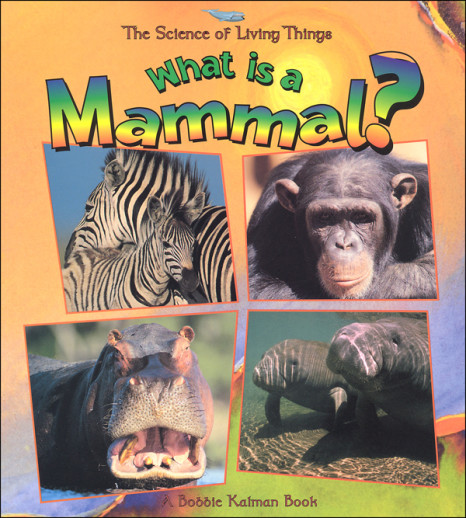We use cookies to make your experience better. To comply with the new e-Privacy directive, we need to ask for your consent to set the cookies. Learn more.
What is a Mammal?
What is a Mammal? teaches the basic rules as well as the exceptions that help children understand differences between mammals and other living things. Amazing full-color photographs feature a large variety of mammals including apes, elephants, rodents, and bats and help identify:
- those mammals that lay eggs
- mammals with a pouch
- placental mammals, such as humans
Items listed in this section tend to be complete science programs with a teacher and student component, requiring few supplements besides science supplies.
User-friendly, well-organized and academically sound, these science guides from Memoria Press are sure to please the science-loving child in your home. Courses consist of a teacher guide, a student guide and in some cases, a separate text. Optional resources are suggested for some courses.
The Mammals study from Memoria Press is divided into 30 lessons, but covers a variety of mammal topics - What is the Animal Kingdom, What is a Mammal, Monotremes, Marsupials, Insectivores, Chiropterans, Edentates, lagomorphs, Hyraxes and the Aardvark, Rodents, Ungulates, Elephants, Carnivores, Cetaceans, and Primates.
The Teacher Guide and Student Book are designed to accompany World of Animals, What is the Animal Kingdom, and What is a Mammal. In the Student Book, for each lesson, there is a reading assignment then exercises to be completed. Journal pages are found at the back of the student book for additional notes and facts they may have found. There are 2 to 3 pages per lesson. The Teacher Guide includes student pages with the answers filled in, review suggestions at the end of each lesson, quizzes, tests, and answer keys for both. ~ Donna
| Product Format: | Softcover Book |
|---|---|
| Brand: | Crabtree Publishing Company |
| Grades: | 3-6 |
| ISBN: | 9780865058903 |
| Length in Inches: | 10 |
| Width in Inches: | 9.25 |
| Height in Inches: | 0.25 |
| Weight in Pounds: | 0.3 |

